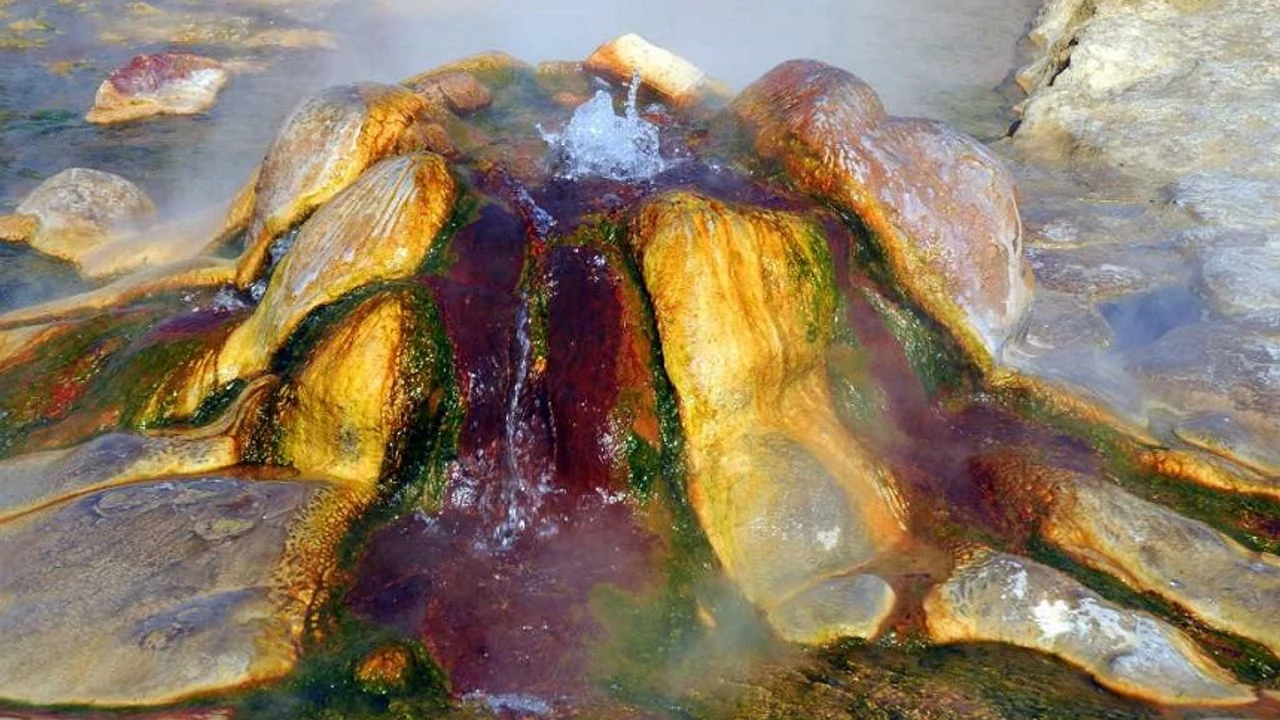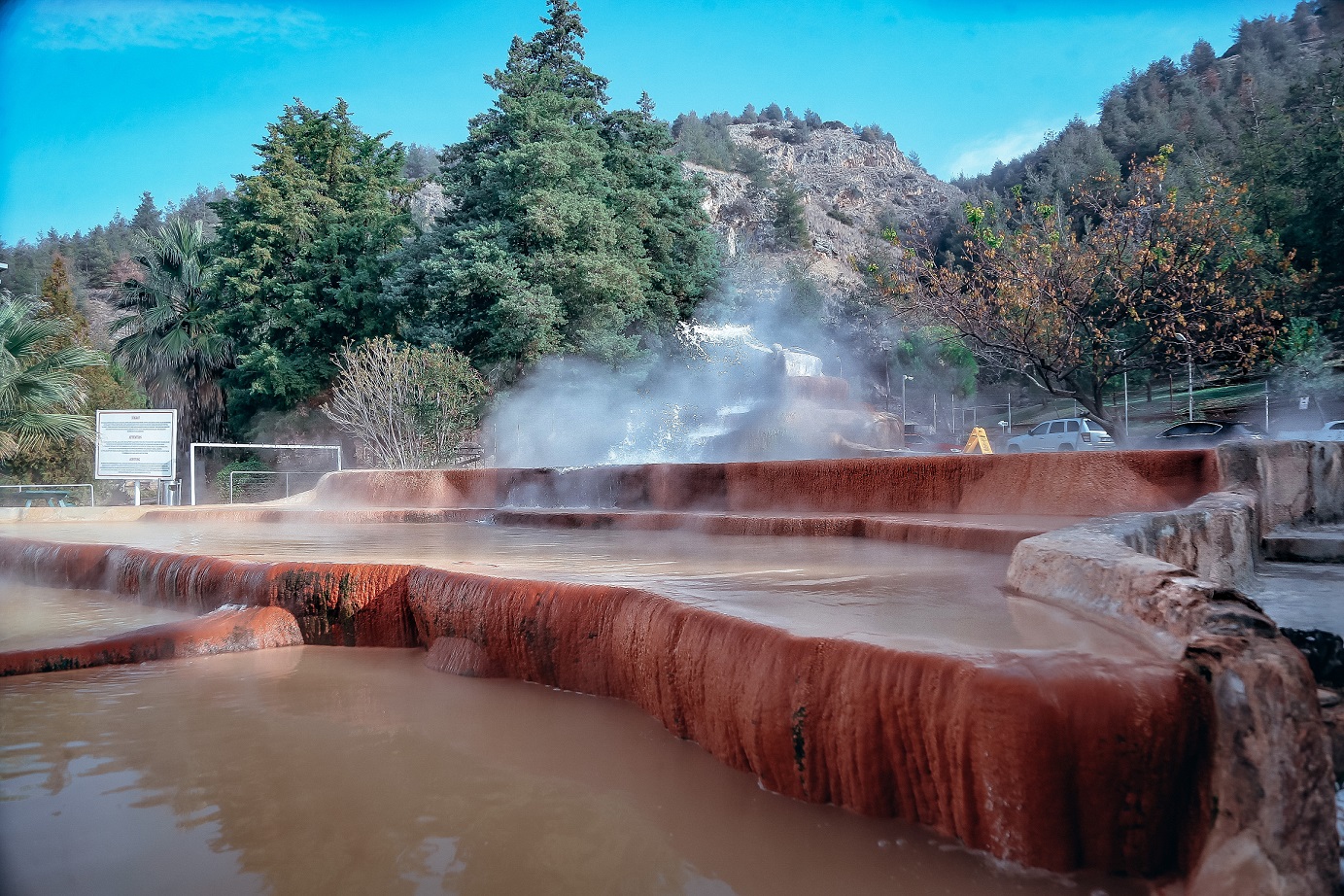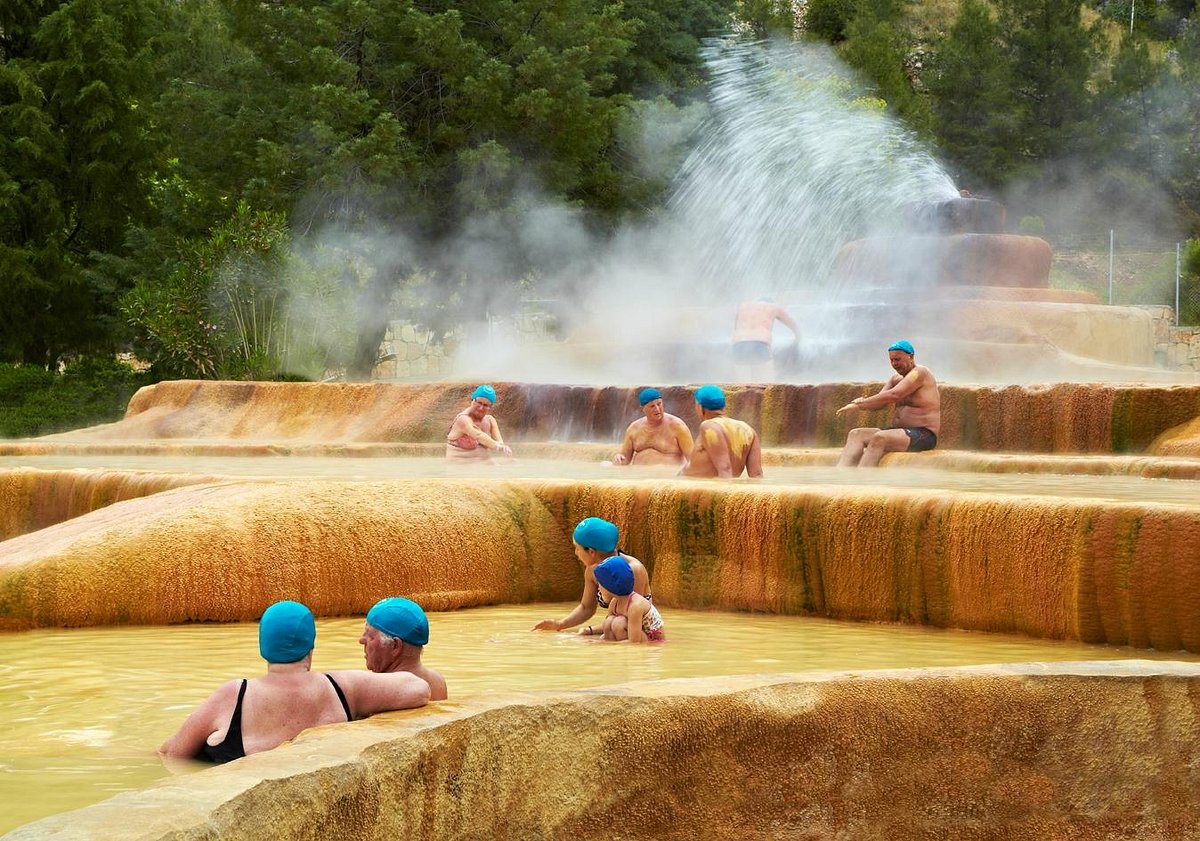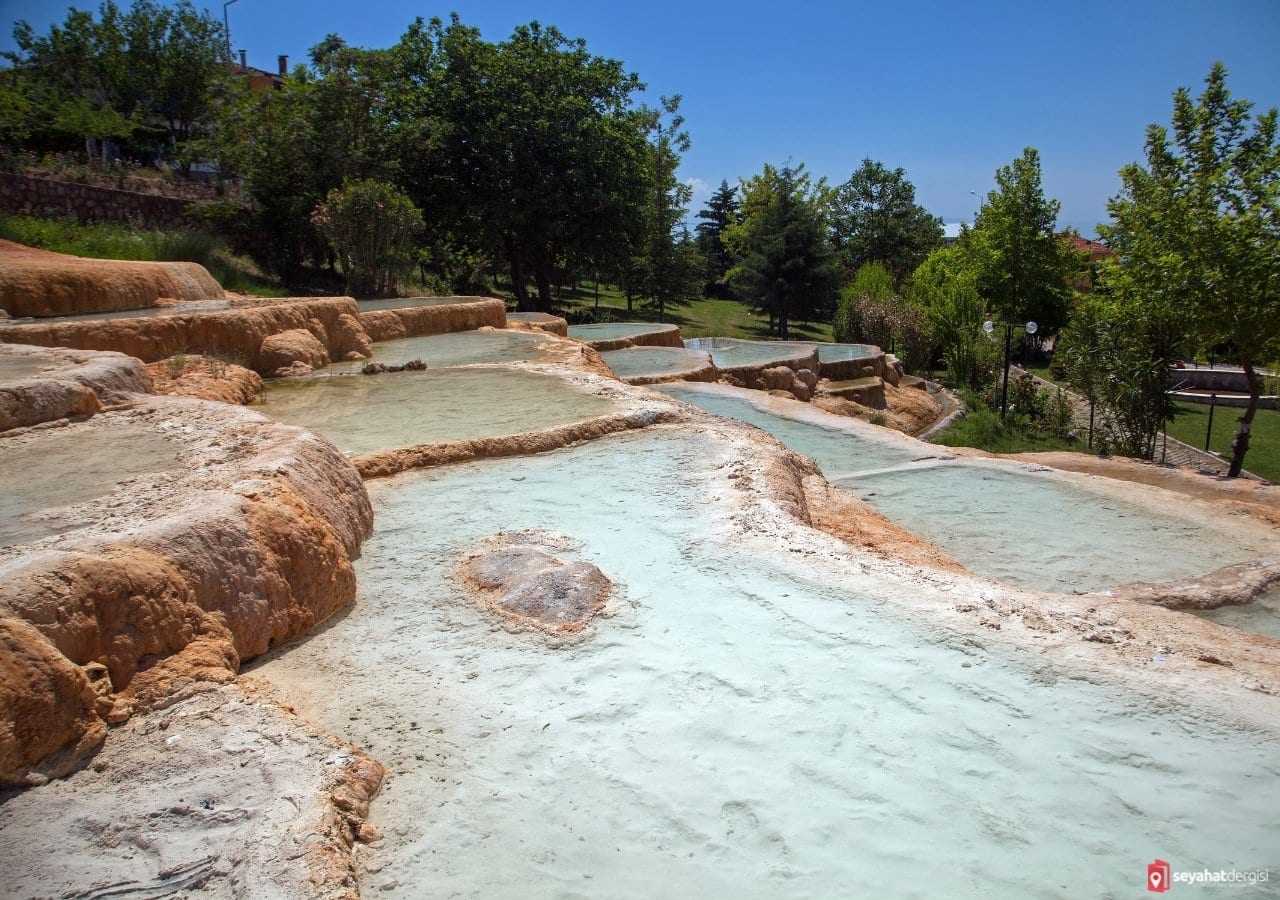Everyone has heard of Pamukkale's famous, snow-white travertines, right? But what if I told you that right next to this white paradise, there's a crimson-red twin that stands in stark contrast? Yes, you heard that right! Karahayıt, a healing corner of Denizli, offers a unique natural wonder colored red by its iron-rich thermal waters, defying Pamukkale's white. If you're looking for a getaway that will pamper both your body and soul, and you want to step off the beaten path to discover a beauty not everyone knows, you must check out our list of things to do in Denizli Karahayıt. This isn't just a spa town; it's a healing, red art gallery created by nature itself.
Visit the red-colored travertines formed by minerals in the thermal water
The moment you step into the center of Karahayıt, an unconventional landscape greets you. Travertines, formed layer by layer, spread over an area of about 500 square meters... But these aren't white like the ones you know. Thanks to the mineral oxides in the water, this natural formation, which takes on shades of red, and occasionally green and orange, looks as if it's from another planet. The secret to this captivating color is quite simple: the thermal water, gushing from underground at a temperature of about 60°C, contains a high amount of iron oxide. When the water reaches the surface and meets oxygen, the iron essentially rusts, creating this unique red color and forming the travertines layer by layer over thousands of years.
You don't have to climb mountains to see this visual feast. It's located right in the heart of Karahayıt, easily accessible from the town's market. You'll also notice that these red rocks are not just a natural wonder but have become a part of the town's identity, used in the landscaping of many local structures.

Rest your feet in the healing, muddy red water
After seeing those magnificent red travertines, it's time to feel this water on your skin! When you take off your shoes and step into the small, publicly arranged pools, a warm, mineral-scented water that makes you forget all the day's fatigue welcomes you. Although it emerges from its source at a high temperature of 58°C, the water in these pools is at an ideal temperature. The red, slightly muddy feeling under your feet will give you a unique experience of becoming one with nature.
So why is this water called healing? Because thanks to its rich mineral content, it has been regarded as a source of healing for centuries. It has been both popularly experienced and supported by research to be beneficial for ailments such as rheumatism, arthritis, and muscle and joint pain. Its benefits have even been documented by the Ministry of Health. It not only helps with pain but also improves blood circulation, alleviates skin problems like eczema and psoriasis, and helps reduce stress with the relaxing effect of its warmth. The benefits of Pamukkale's white waters are also countless; for more information on this, you can check out our Pamukkale travel guide. Additionally, the region has an interesting tradition: when this water is cooled, it can be consumed as içmece (drinkable mineral water) and is believed to be good for digestive system disorders.

Experience a mud bath at one of the region's thermal hotels
If you want to feel the healing power of the red water not just on your feet but on your entire body, let us introduce you to Karahayıt's famous mud baths. This experience takes the healing offered by the region to the next level. This mud is actually the concentrated, purest form of the valuable minerals and elements found in the thermal water. This therapy, offered in many thermal hotels and spa centers in the region, is a ritual that is both fun and incredibly beneficial.
As you wait for the warm mud applied to your body to dry, you will feel your skin tighten and rejuvenate. The benefits of a mud bath are numerous: it softens the skin, deeply cleanses pores, and its antiseptic effect helps dry up pimples and acne. It is also said to help reduce the appearance of cellulite and stretch marks by firming the skin. Just like the thermal water, the deep heating effect of the mud is perfect for relieving joint and muscle pain. In Karahayıt, you can find accommodation options for every budget that offer this unique experience, from luxury facilities like Spa Hotel Colossae Thermal to the region's first ministry-approved hotel, Herakles Thermal Hotel.

While You're Here, Don't Miss These Places!
After finding healing and relaxation in the red waters of Karahayıt, you've regained your energy. But your trip isn't over! Karahayıt is in such a strategic location that you can use it as a base for day trips to Denizli's most important historical and natural beauties.
Pamukkale Travertines and Hierapolis Ancient City: You can go from the red paradise to the white paradise with just a 5-kilometer journey. At this iconic UNESCO World Heritage site, you can walk barefoot on the travertines and witness history in the ancient theater of Hierapolis.
Laodikeia Ancient City: This is no ordinary ancient city. It was once one of Anatolia's wealthiest metropolises and a sacred center, home to one of the Seven Churches mentioned in the Bible. Walking along its magnificently restored colonnaded streets, you'll feel like you're in the Roman era. You can find everything you're curious about regarding Laodikeia Ancient City, which is so important to Christian history, in our related article.
Kaklık Cave: Also known as the Underground Pamukkale, this cave promises a surreal experience. Inside the cave, you'll be greeted by travertines similar to those in Pamukkale, waterfalls, and sulfurous thermal waters. This view, combined with the green of the moss covering the cave walls, is definitely worth seeing.
Sources
More detailed and official information about the properties and benefits of the thermal water mentioned in this article can be found on the official website of the T.R. Pamukkale District Governorship: http://www.pamukkalekaymakamligi.gov.tr/karahayit.
Frequently Asked Questions (FAQ)
Why is the water in Karahayıt red? The reason is very simple: its high iron oxide content. When the hot water emerges from underground and comes into contact with the air, the iron undergoes a reaction similar to rusting, giving the water and travertines their famous red color.
When is the best time to go to Karahayıt? The best part about Karahayıt is that you can visit it in all four seasons! Since the temperature of the thermal water is constant throughout the year, it is always healing. It's an unforgettable experience to enter the warm thermal pools, especially when it's cool outside in the winter months.
Is the water in Karahayıt drinkable? Yes, there is a tradition in the region known as içmece. The water, taken from the source and cooled, is believed to be good for the digestive system. However, if you have a chronic illness, it's best to consult your doctor before trying it.


 English
English Türkçe
Türkçe